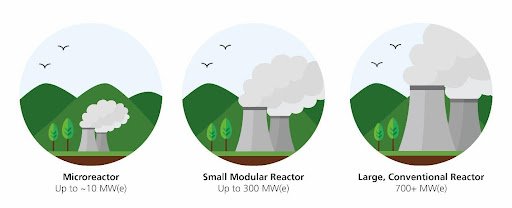The rapid adoption of artificial intelligence (AI) and machine learning (ML) technologies has driven unprecedented data center expansion. This growth demands massive amounts of energy, presenting both challenges and opportunities in achieving optimal infrastructure efficiency.
The increasing size and complexity of AI models necessitate advancements in both data center design and operational best practices. Developing a nuanced understanding of wider implications (e.g., energy consumption, infrastructure design, and sustainability) is now more crucial than ever in successfully navigating the dynamic convergence of energy and data.
This article explores the multifaceted considerations associated with data center growth. In doing so, the article seeks to provide an overview of emerging, next-generation data centers. By discussing these core themes, this work equips readers with a comprehensive understanding of the evolving data center expansion landscape.
Energy sector transformation
To support the rising power demands of data centers – and to ensure reliable, efficient, and sustainable power delivery – the energy sector must adapt. This transformation encompasses three key areas: upgrading power grids with advanced control systems, integrating renewable energy sources, and developing smart grid technologies to create a more intelligent and responsive power grid:
Modernizing the grid
Outdated systems: Many parts of the power grid were built in the mid-20th century and are not equipped to handle the complexities of modern power demands and renewable energy integration.
Essential upgrades: Enhancing the grid with advanced sensors, control systems, and energy storage solutions will help provide a reliable and efficient power delivery.
Innovative technologies: To boost transmission capacity, the industry is investing in Grid Enhancing Technologies (GETs) such as dynamic line rating, virtual power plants, and large-scale energy storage.
Implementing smart grid technologies
Adaptive power distribution: Smart grids dynamically adjust power distribution to meet varying energy demands. This approach is well suited to meeting the variable power demands of modern AI data centers while reducing energy waste from AI workloads.
Demand response programs: Data centers can participate in programs that adjust power usage during peak times to help balance the grid and potentially lower energy costs.
Enhanced reliability: Advanced AI-powered monitoring and predictive maintenance capabilities can prevent outages and ensure power supply stability across the entire ecosystem.
Incorporating new sources of energy generation
Renewables and the geographical challenges: Renewable energy installations require abundant natural resources, necessitating careful planning around both location and adequate transmission infrastructure.
Transmission queue: There exists an estimated 2.6+ terawatts of energy generation capacity waiting for transmission interconnect approval, with an expected wait and build time of four to five years.
New generation: To meet the on-demand requirements for consistent and reliable energy, AI data center providers are deploying onsite energy generation and advanced energy storage facilities. They are also enhancing interconnections to utility-scale renewable energy sources through the grid. In addition to traditional energy sources, the industry is investing in geothermal, advanced nuclear, clean hydrogen, and long-duration energy storage. AI data center providers are collaborating with the energy sector on new business models, including the colocation of data centers with existing nuclear generation sites.
Note that as the industry advances common interests in nuclear power, we will likely see reactors ranging in size and output, with each reactor capable of powering the equivalent of smaller settlements, larger townships, and cities as required:
Infrastructure challenges
The industry must rethink current approaches to core issues, including challenges in bandwidth, latency, power, and cooling. To illustrate the significant impact of infrastructure challenges on network performance, consider that Meta reports that an average 33 percent of AI processing time is spent waiting for network responses. By taking steps towards holistic, innovative solutions, these delays can be reduced or avoided, eventually minimizing or eliminating timeouts that not only negatively impact customer service but increase operational costs and hinder efficient scalability.
Data infrastructure evolution
The rapid growth in AI model complexity and the associated growing energy demands continually strain global data infrastructure capabilities. Also, this growth has fundamentally changed data center traffic patterns, driving a shift from traditional north-south traffic to extensive east-west communication within data centers.
Next-generation data centers
The intensifying debate between distributed and centralized architectures stems from the competing demands of scale and latency. While centralized data centers offer economies of scale for computing and power delivery, AI latency requirements undoubtedly push workloads toward edge computing and distributed architectures – a shift that presents further energy challenges, as edge nodes must balance the benefits of processing data closer to the source with potential energy efficiency losses from smaller scale operations (i.e., installing smaller data centers to process data near to the source brings the downside of reduced energy efficiency compared to larger facilities).
Hybrid models may offer a solution. By optimizing both energy use and performance and by using advanced networking solutions and dynamic resource allocation to adjust power consumption based on traffic patterns and workload distribution, hybrid models could help drive energy and data efficiency in the continued expansion of data centers.
Conclusion
As the global demand for access to high-performance AI models accelerates, the necessary convergence of energy and data will continue to drive innovation in three key areas: sustainable infrastructure, integrated energy-data systems, and efficient hardware. The growing appetite for access to advanced AI systems will impact power generation, distribution, and consumption, necessitating a global energy infrastructure transformation that will include better grid modernization and the integration of diverse renewable sources.
Simultaneously, the required data center upgrades needed to keep pace with advanced processing requirements and extreme bandwidth demands will dictate further innovation inside the data center. Right now, the industry faces a unique opportunity to lead markets toward creating a more energy-efficient, sustainable digital future.
Seán Adam, vice president of market strategy and innovation at AFL, also contributed to this article.
More from AFL
-

Sponsored The age of exascale
In the thick of the exascale era, ultra-high-density fiber optic connectivity is key to meeting the challenges of AI data centers, powering next-generation computing
-

Sponsored Recalibrating expectations for AI in 2025
Reevaluations while the AI industry is navigating a period of tempered expectations and regulatory overhead
-

AI Data Centers: Scaling Up and Scaling Out
An in-depth commentary on the technical building blocks enabling scaling up and scaling out in modern AI data centers.


